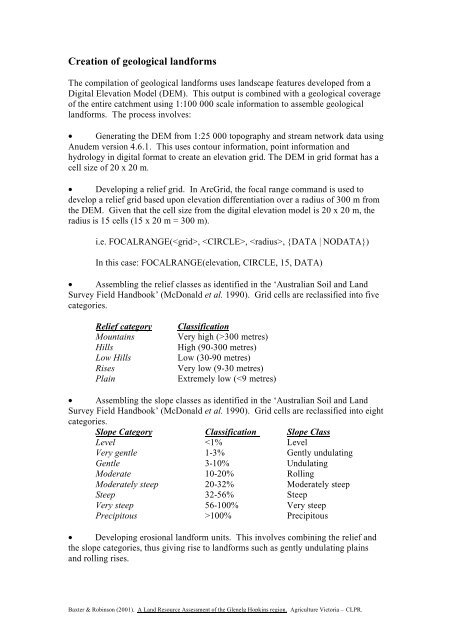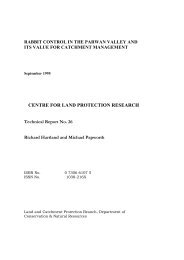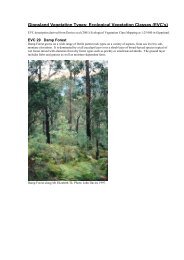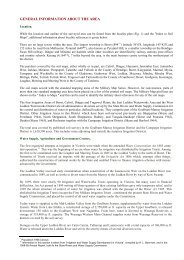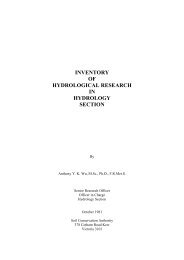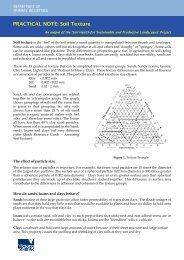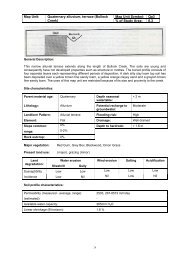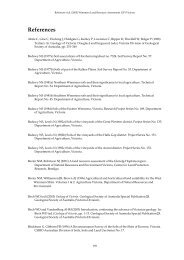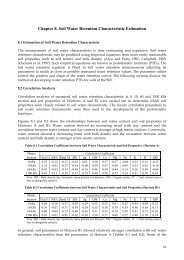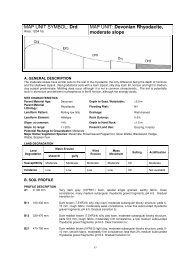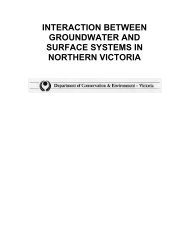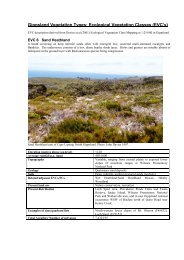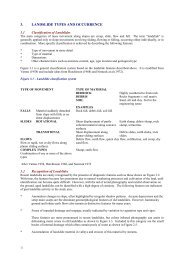Creation of geological landforms (PDF 30KB)
Creation of geological landforms (PDF 30KB)
Creation of geological landforms (PDF 30KB)
You also want an ePaper? Increase the reach of your titles
YUMPU automatically turns print PDFs into web optimized ePapers that Google loves.
<strong>Creation</strong> <strong>of</strong> <strong>geological</strong> <strong>landforms</strong><br />
The compilation <strong>of</strong> <strong>geological</strong> <strong>landforms</strong> uses landscape features developed from a<br />
Digital Elevation Model (DEM). This output is combined with a <strong>geological</strong> coverage<br />
<strong>of</strong> the entire catchment using 1:100 000 scale information to assemble <strong>geological</strong><br />
<strong>landforms</strong>. The process involves:<br />
• Generating the DEM from 1:25 000 topography and stream network data using<br />
Anudem version 4.6.1. This uses contour information, point information and<br />
hydrology in digital format to create an elevation grid. The DEM in grid format has a<br />
cell size <strong>of</strong> 20 x 20 m.<br />
• Developing a relief grid. In ArcGrid, the focal range command is used to<br />
develop a relief grid based upon elevation differentiation over a radius <strong>of</strong> 300 m from<br />
the DEM. Given that the cell size from the digital elevation model is 20 x 20 m, the<br />
radius is 15 cells (15 x 20 m = 300 m).<br />
i.e. FOCALRANGE(, , , {DATA | NODATA})<br />
In this case: FOCALRANGE(elevation, CIRCLE, 15, DATA)<br />
• Assembling the relief classes as identified in the ‘Australian Soil and Land<br />
Survey Field Handbook’(McDonald et al. 1990). Grid cells are reclassified into five<br />
categories.<br />
Relief category<br />
Mountains<br />
Hills<br />
Low Hills<br />
Rises<br />
Plain<br />
Classification<br />
Very high (>300 metres)<br />
High (90-300 metres)<br />
Low (30-90 metres)<br />
Very low (9-30 metres)<br />
Extremely low (
• Compiling geology coverage from the 1:100 000 digital information.<br />
Unfortunately with these 1:100 000 maps, there may be map boundary discrepancies<br />
and differing scales <strong>of</strong> map detail. These map boundaries and discrepancies in<br />
geology are to be accounted for and corrected to produce a consistent and accurate<br />
coverage through editing in ArcEdit. Gaps in the coverage are filled via the<br />
extrapolation process.<br />
• Assigning <strong>geological</strong> units into lithological groups with an emphasis on<br />
texture, formation type and age (for the Glenelg Hopkins region, 58 <strong>geological</strong><br />
lithology types were recognised for the catchment). Convert this coverage into a grid<br />
with the same cell size as the DEM.<br />
• Developing soil/landform map units. This involves combining the lithology <strong>of</strong><br />
these <strong>geological</strong> units, and addition <strong>of</strong> the erosional landform.<br />
• Using ArcView, erosional <strong>landforms</strong> and lithological types are combined<br />
producing a composite grid <strong>of</strong> <strong>geological</strong> (lithology) <strong>landforms</strong>.<br />
Baxter & Robinson (2001). A Land Resource Assessment <strong>of</strong> the Glenelg Hopkins region. Agriculture Victoria – CLPR.


